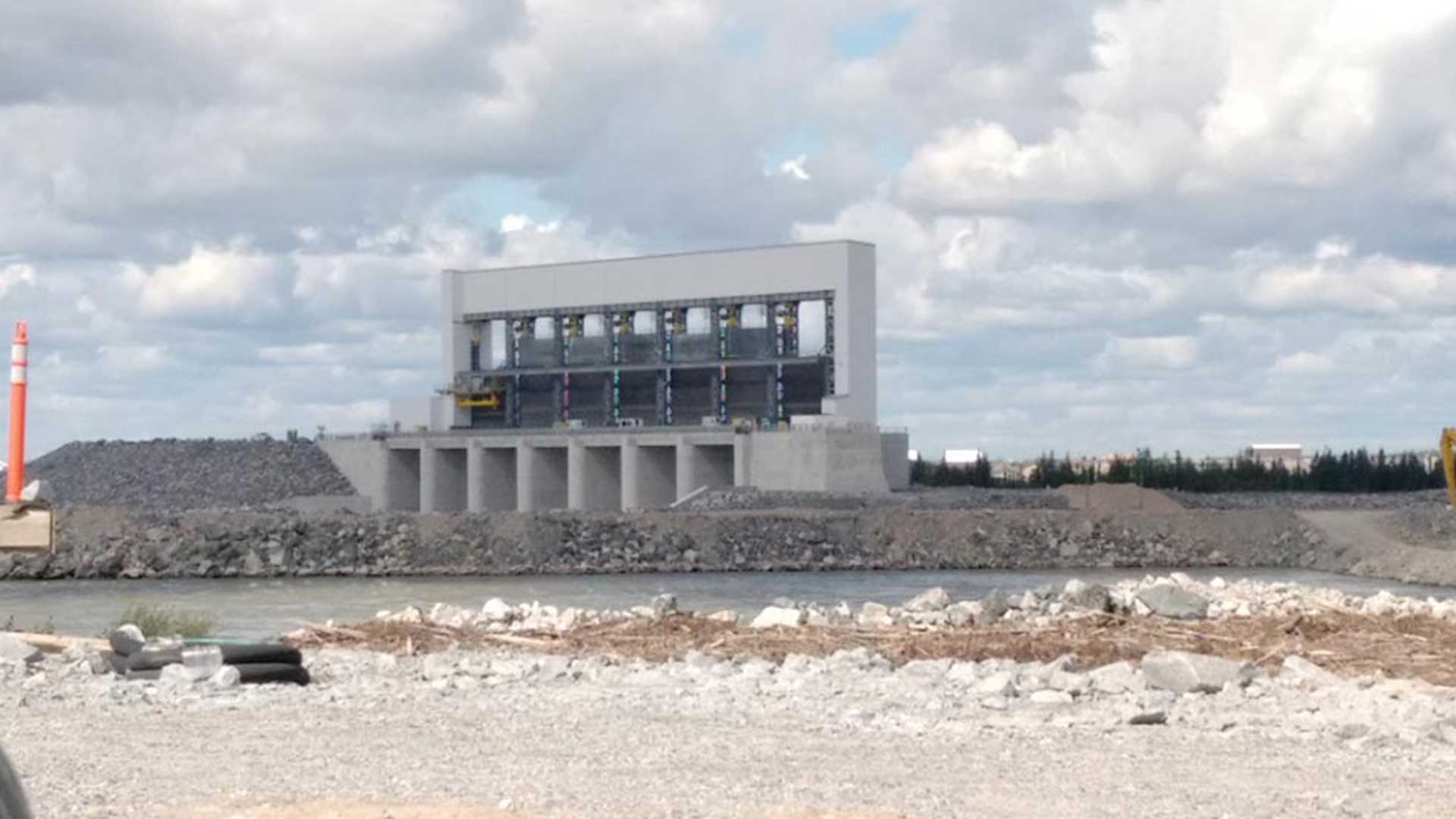Manitoba Hydro, founded in 1961 as a provincial crown corporation, has provided low electricity rates for customers, largely in the south of the province, to the detriment of the people who call the north home.
“It’s part of the identity of Manitoba and since the ‘60s, there are a variety of dams that have been built in northern Manitoba that have been controversial,” says Aimée Craft, on the latest episode of Face to Face.
“They’ve been the subject of a re-negotiated agreement, the northern flood agreement and often this was on the backs of First Nations and with significant impact on lands, waters, territories in the north.”
Craft, who is Anishinaabe/Metis, is a lawyer, academic and author from Treaty 1 territory in Manitoba.
She is the co-editor of In Our Backyard Keeyask and the Legacy of Hydroelectric Development. The book was launched on May 17 and amplifies the voices of Indigenous peoples impacted by Manitoba Hydro dams.
The book was ten years in the making, building on public hearings held in 2012 on the Keeyask hydro project, by the Manitoba Clean Environment Commission.
The Keeyask Generating Station is a 695-megawatt, hydroelectric station that is being developed in a partnership between Manitoba Hydro, Tataskweyak Cree Nation, War Lake First Nation, York Factory First Nation and Fox Lake Cree Nation.
Roughly 30,000 people have worked on the project which has gone from the original budget of $6.5 billion to a projected $8.7 billion. The project is located approximately 725 km north of Winnipeg.
Similar to projects in the past, Keeyask has faced cost overruns and allegations of sexual assaults and racism.
Craft, who was the former director of research at the National Inquiry into Missing and Murdered Indigenous Women and Girls, says workers from all over Canada were brought in to work on the project and even cultural sensitivity training can’t undo “camp culture.”
“Having worked at the Inquiry, one of the questions that we asked about Indigenous women was what allows for de-valuation of Indigenous women’s lives and its very similar in thought to what allows us to de-value land or to extract from land, its seen as something to be taken up by someone who has more power. So, there are interesting parallels there between what we do to the land and what we do to women in these types of camps,” says Craft.
In 2018, the Manitoba Clean Environment Commission released a report following hearings on the environmental and social effects of energy development between the 1950s and 1980s.
The damning report outlined allegations of physical and sexual abuse, racism, and loss of land in Fox Lake Cree Nation.
The province apologized and called on the RCMP to investigate the claims. However, some of the claims were made against law enforcement.
Manitoba’s police watchdog, the Independent Investigation Unit, announced it was investigating allegations of assault and sexual abuse by members of the RCMP, in northern Manitoba.
Nearly four years later, no update has been provided by the IIU. The IIU did not respond to an APTN News email seeking an update.
Craft says there are many environmental impacts when constructing a megaproject like a dam, including flooding, the effects on wildlife and vegetation, and the loss of the sounds of the rapids.
“Often hydro is categorized in the renewable resources category but the impact on the territory is long term,” says Craft. “As much as water can cycle through and be re-used, there’s still a significant impact on shoreline erosion and on the quality of water within territories, and then the impact of transmission lines.
“Once hydro is generated, it also has to be transmitted and that’s something that’s quite significant when you’re bringing power from northern Manitoba to southern Manitoba.”

In February, York Factory First Nation called on Manitoba Hydro and the province to reopen and update the Joint Keeyask Development Agreement, which was signed in 2009.
In a press release, the First Nation wrote, “after 13 years, including delays in the Keeyask Project’s schedule and increases in cost, the First Nations are now facing a future of negligible financial returns and the potential of significant financial losses from the Agreement that was meant to offer our First Nations and equitable future.”
The press release mentioned “serious gender and racial discrimination and violence on the project sites that have been brushed off by Manitoba Hydro as just “cultural awareness” issues.”
York Factory First Nation Chief Leroy Constant wrote, “over the past 65 years we have been forced to progressively invest everything that Creator and our ancestors have provided for our sustenance. In return, we have received negative impacts, discrimination in our own lands, and broken promises.
“Once again, the adverse effects of yet another major hydroelectric project have been imposed on remote Indigenous Peoples for the benefit of non-Indigenous governments and peoples.”
Manitoba Hydro says it and “the 4 Partner First Nations are engaged in ongoing dialogue related to the Keeyask Partnership.”
did not respond to a series of questions about the project and whether Joint Keeyask Development Agreement would be updated.
Craft is currently working on another book about mega-projects that will the Muskrat Falls Dam in Newfoundland and Labrador, the Site C dam in northern British Columbia and the Ring of Fire in northern Ontario.













